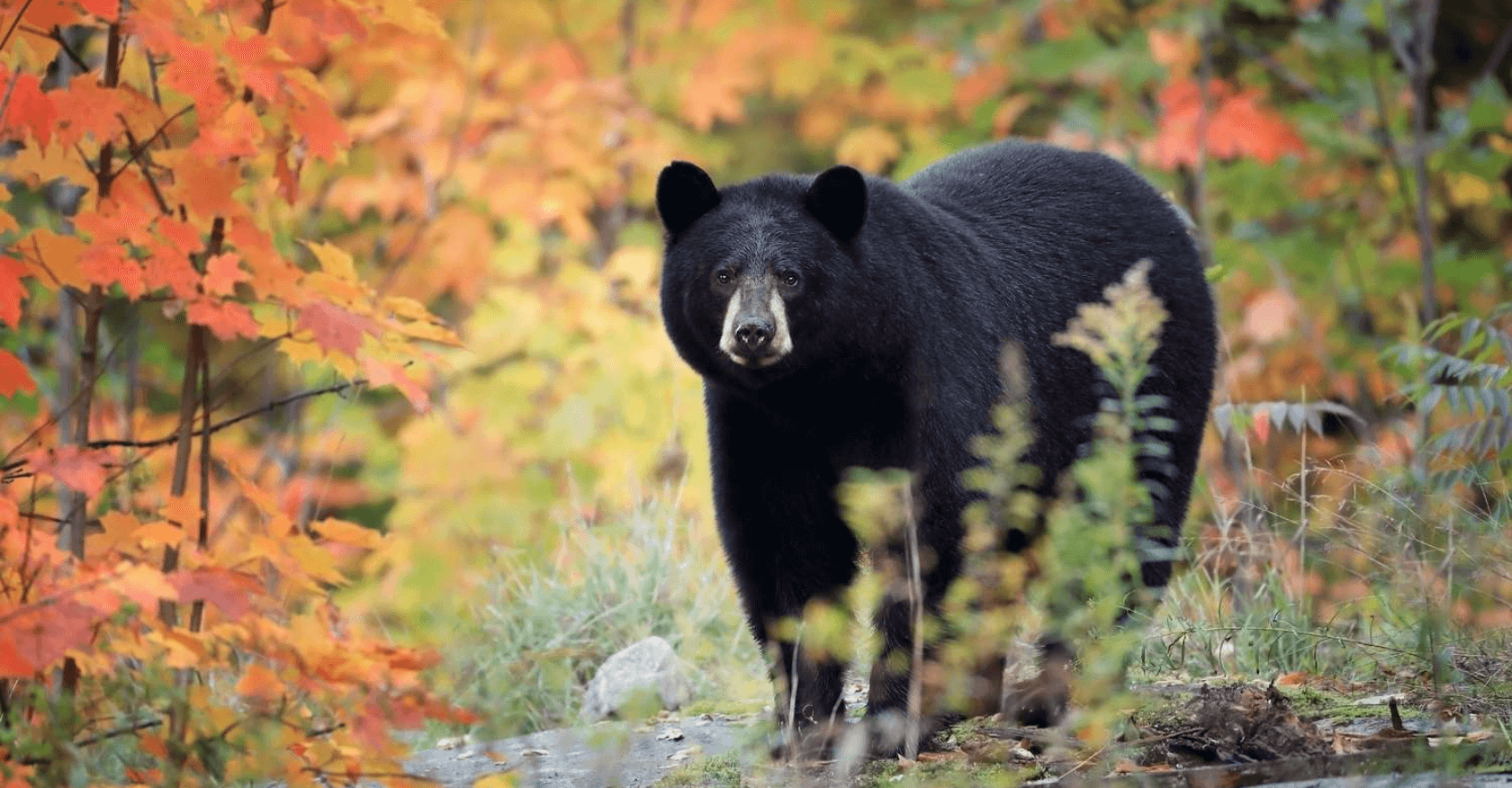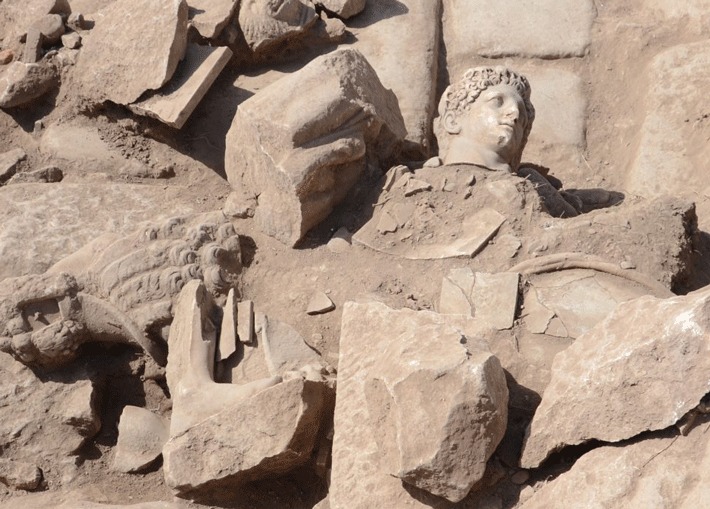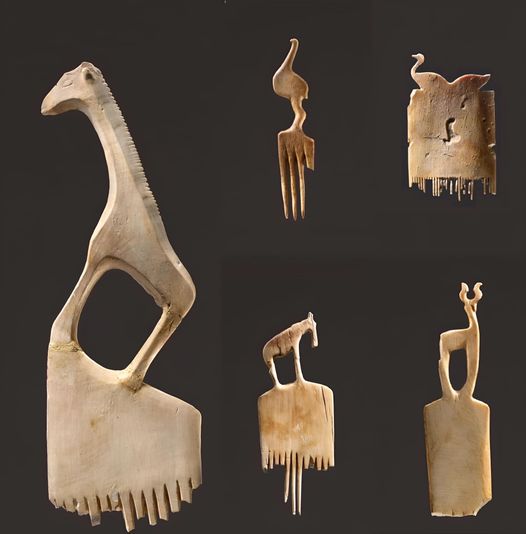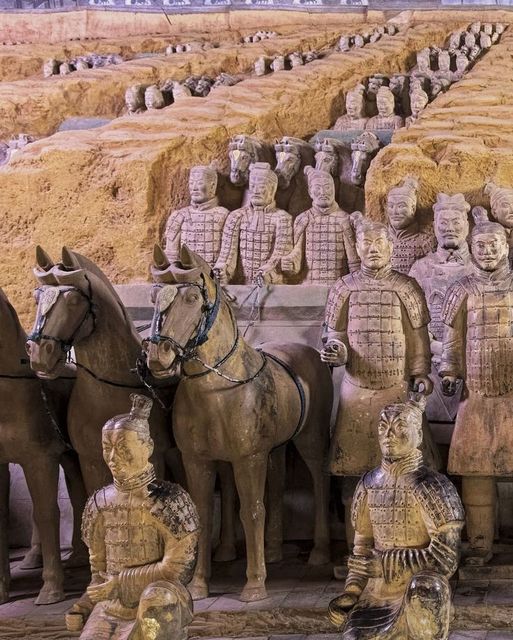The black bear is the most common bear species in North America and has the widest distribution, including most of Canada except the prairies and Prince Edward Island, parts of the United States and northern Mexico. Black bears live in areas with trees and grasslands, mountainous areas, sparsely populated forests, swamps and forests. In addition, there are many interesting information about black bears that we need to discover, let's find out with me!
1. General Information
The North American black bear (Ursus americanus) is a medium-sized bear native to North America. It is the continent's smallest and most common bear species. North American black bears are omnivores with diets that vary considerably depending on the season and location.
They usually live in predominantly forested areas, but leave the forest in search of food. They sometimes infiltrate communities because of the availability of food for them. Black bears often mark trees using their teeth and claws as a form of communication with other bears, a behavior common to many bear species.
The North American black bear is the most common bear species in the world. It is listed as a species of least concern by the IUCN, due to its widespread prevalence and large global population estimated at twice that of all other bear species combined. Along with the brown bear, it is one of only two of eight modern bear species that are not considered globally threatened with extinction as assessed by the IUCN. Today, the number of black bears in the Americas is estimated at between 850,000 and 950,000 individuals

2. The origin of the black bear
Despite living in North America, the North American black bear is not closely related to the brown bear and the polar bear; Genetic studies show that they diverged from a common ancestor about 5.05 million years ago. The North American and Asian black bears (horse bears) are considered sister species, and are more closely related than other bear species. Sun bears were also separated from this clade relatively recently.
The primitive little bear Ursus abstrusus is the oldest known fossil of the genus Ursus in North America, 4.95 Ma. This suggests that U. abstrusus may be the direct ancestor of the North American black bear, which evolved in North America. Although Wolverton and Lyman still consider U. vitabilis to be the "precursor of the modern black bear", it is also placed in the species U. americanus.
The ancestor of black bears and sun bears diverged from sun bears around 4.58 Ma. The North American black bear then separated from the sun bear around 4.08 Ma. The earliest North American black bear fossils, located at Port Kennedy, Pennsylvania, are very similar to the grizzly bear, although later specimens have increased in size to the grizzly bear. From the Holocene to the present, North American black bears appear to have shrunk in size,[4] but this has been controversial because of problems with the dating of these fossils.
North American black bear lived at the same time as the short-faced bear (Arctodus simus and A. pristinus) and the Florida spectacled bear (Tremarctos floridanus). These bears evolved from bears that migrated from Asia to North America around 7-8 years ago. Shortfaced bears are believed to be more carnivores and Florida glasses bears more herbivores, while North American black bears are arboreal omnivores, much like their Asian ancestors.
The black bear's lifestyle allows it to exploit a wider variety of foods and is seen as one reason why, out of these three genera alone, it has survived despite climate and flora changes. during the last ice age, when other, more specialized North American predators became extinct. However, both Arctodus and Tremarctos have survived many other ice ages. These prehistoric bears then became extinct during the last ice age 10,000 years ago, and the North American black bear was probably the only bear species present in North America until the arrival of bears. brown in the rest of the continent.

3. Distribution and quantity
In the past, North American black bears occupied most of the forest areas in North America. Currently, they are confined mainly to quiet, scattered forest areas.
North American black bears currently live a lot in Canada. They have been extinct on Prince Edward Island since 1937. The total population of Canadian bears is between 396,000 and 476,000, based on surveys conducted during the 1990s in seven Canadian provinces, although estimates This does not include black bear populations in New Brunswick, the Northwest Territories, Nova Scotia, and Saskatchewan. Black bear populations in all provinces have been stable over the past decade.
The current range of black bears in the United States is constant throughout most of the northeast (from under the nearly continuous Appalachian Mountains to Virginia and West Virginia), the northern midwest, and the Rocky Mountains region. , west coast and Alaska. However, their distribution is increasingly fragmented or absent in other regions. Even so, North American black bears in areas that appear to have expanded their range over the past decade, such as recently seen in Ohio, although they may not yet represent populations. stable living. Surveys conducted from 35 states in the 1990s showed that black bear populations were stable or increasing, except in Idaho and New Mexico. The total population of black bears in the United States is estimated to range from 339,000 to 465,000, although excluding populations in Alaska, Idaho, South Dakota, Texas, and Wyoming, whose population numbers are unknown.
As of 1993, populations of Mexican black bears are known to exist in four areas, although information on the distribution of populations outside these areas has not been updated since 1959. Mexico is a country The only country where black bears are classified as endangered

4. Living environment
Across its range, the North American black bear's preferred habitat has several features in common. They are commonly found in areas with relatively inaccessible terrain, dense understory vegetation, and a large number of edible materials (especially acorns). This species' adaptation to forests and thick vegetation may have originally been due to the fact that black bears evolved with larger, more aggressive bear species, such as the extinct short-faced bear and northern grizzly bear. America still exists, but they occupy more open habitat and the presence of larger prehistoric carnivores such as Smilodon and North American lions that may have hunted black bears.
Although most live in wild, desolate, and rural areas, North American black bears can adapt to survive in some numbers in peri-urban areas, as long as there is readily available food. sword and some wooded areas.[6] In most of the U.S. frontier, today's black bears are commonly found in heavily vegetated mountainous areas, at elevations between 400 and 3,000. For bears that live in the American Southwest and Mexico, the habitat usually includes areas of cypress and shrubland. In this area, bears sometimes move to more open areas to feed on prickly pear cactus. There are at least two distinct major habitat types that inhabit the southeastern United States.
Black bears in the southern Appalachian Mountains exist mainly in beech and mixed forests. In the southeastern coastal areas (such as Louisiana or Florida), bears live in a mixture of coniferous grasslands, coastal bays, and marsh hardwood areas. In the northeastern range (United States and Canada), primary habitats include canopies of hardwood forests such as oak, maple, and birch, and conifers. Corn and acorns are also common food sources in some regions of the northeast; Small, dense swampy areas provide them with excellent shelter covering most areas of white cedar. Along the Pacific coast, redwoods, spruce, and spruce predominate as permanent reserves.
In addition to these northern forest types, the next most important area for black bears are areas of shrubland, wet and dry grasslands, high-tide zones, riparian areas, and a variety of woodlands. Spruce and fir forests dominate many black bear distributions in the Rockies. Important non-forested areas here are wet grasslands, riparian areas, avalanche cliffs, roadsides, streams, hillside parks, and relatively high mountains. In areas where human impact is relatively low, such as the expanse of Canada and Alaska, North American black bears tend to be found more frequently in lowland areas. In northeastern Canada, particularly Labrador, black bears have adapted to semi-sparse areas that are typical North American brown bear habitats (probably because there are no brown bears and bears here). arctic white as well as other large carnivores).

5. Body characteristics
The skull of the North American black bear is very broad, with a narrow nose and large jaw. The average total skull length of adult black bears in Virginia, is 262–317 mm. The largest skull length of this species has been reported to be 23.5 to 35 cm. Small black or brown eyes. The ears are small and round, at the back of the head. The muzzle is long and pointed with a long, brown nose. Females tend to be slimmer and have more pointed faces than males. Tongue and lips can move flexibly.
Black bears have 42 teeth adapted to an omnivorous diet. The incisors can be used to cut meat but are more commonly used to cut grass and vegetation on the forest floor. The fangs can be used to catch prey and injure opponents, but are more commonly used to tear up beehives, ants, and insect habitats. The very wide and flat molars are used for grinding nuts and fruit or chewing plant food. Black bears are less carnivorous, so they don't need sharp molars and have the scissor shape of typical carnivores like wolves and cats. They have strong jaw muscles with very powerful bites, especially those of males.
The black bear's hind legs are slightly longer than the forelimbs and are relatively longer than the raccoon's hind legs. The paws of this species are relatively large, with a hind foot length of 13.7-22.5 cm, which is larger than that of other medium-sized bears, but much smaller than the adult brown bear's paws. large cities and especially polar bears. The soles of the feet are black or brown, with bare fleshy padding, covered with skin, and deeply wrinkled. Each foot has five toes with non-retractable claws used for tearing food, digging, raking, and climbing trees. Their claws are usually black or gray. The claws are short (2–3 cm) and round, thick at the base, and tapered. The claws on both forelegs and hind legs are roughly the same length, although the front claws tend to be more pointed.
Black Bear is very clever and clever, able to open jars with swirl caps and remove door latches. They can stand and walk on their hind legs. They also have great power. A single slap with a black bear's front paw is enough to kill a large deer. Even small bears are able to overturn rocks weighing 141–147 kg with one foreleg. They move on their feet with steady rhythm and can run at speeds of 40–50 km/h.
Black bears have good eyesight, and at the same time, their hearing and smell are well developed. They have better eyesight and more sensitive hearing than humans. Black bears have been experimentally shown to be able to learn color-based visual discrimination exercises faster than chimpanzees and on par with dogs. They also have the ability to quickly learn to distinguish different shapes, such as triangles, circles, and small squares. However, their most significant sense is the sense of smell, which is about 7 times better than that of dogs
.
6. Size
Black bear weights tend to vary with age, sex, health, and season. Seasonal weight variation is very pronounced: in the fall, their pre-hibernation weight tends to be 30% higher than in spring, when black bears come out of their burrows. Black bears on the East coast tend to be heavier on average than those on the West coast, and bears in the northwest are generally slightly heavier than bears in the southeast. Adult males typically weigh 57–250 kg, while females are 33% lighter at 41–170 kg. Adults typically have a head and body length of 120 to 200 cm, and a shoulder height of 70–105 cm. The tail is short and usually 7.7-17.7 cm long.
Adult black bears at the Yukon Flats National Wildlife Refuge in east-central Alaska have an average mass of 87.3 kg for males and 63.4 kg for females, while on Kuiu Island in southeastern Alaska (where the nutrient-rich salmon species is readily available) adult bears average about 115 kg. In Great Smoky Mountains National Park, adult males average 112 kg and adult females average 47 kg. In Yellowstone National Park, a population study found that adult males average 119 kg and adult males 67 kg.[30] In the state of California, studies have shown an average weight of 86 kg for adult males and 58 kg for adult females. In New York state, the reported mean weight of the sexes is 135 kg and 74 kg respectively.
Although the black bear is the smallest bear species in North America, the largest male also exceeds the size of other bear species with the exception of brown bears and polar white bears. The largest wild North American black bear ever recorded was a male in New Brunswick, shot in October 1972, weighing 409 kg after it had been skinned, meaning it weighed about 500 kg when alive. , and has a length of 2.41 m. An oversized wild black bear, weighing 408 kg, was shot in December 1921 at the Moqui Preserve in Arizona. A record-sized bear that was shot in Morris County, New Jersey in December 2011 measured 376.5 kg. Even in Pennsylvania a larger black bear (one in six individuals weighing over 363 kg shot in the last 15 years in the state) was recorded weighing 399 kg and was shot in November 2010 in Pike County.

7. Fur
The black bear's coat is soft, with a dense inner coat and large, long, coarse guard coat. The hairs are not as rough or coarse as that of brown bears. The North American black bear's coat is distinct from the black bear's in that it lacks a white space under the chin and stiff hair on the paws. Despite the name, the black bear's fur comes in a wide variety of colors. Coat color can range from white, yellow, cinnamon, or light brown to dark chocolate brown, or jet black, with many intermediate variations existing. Individuals with albinism have also been recorded.
About 70% of all black bears are black, although only 50% of black bears in the Rocky Mountains are black. Black bears that live along the coasts of Alaska and British Columbia have bluish fur. Black bears with white to cream fur are found on the coastal islands and adjacent mainland southwest of British Columbia. The black coat tends to prevail in wet areas such as New England, New York, Tennessee, Michigan and western Washington. Many black bears in Northwestern North America are cinnamon, yellow, or light brown in color, and can therefore sometimes be confused with grizzly bears. However, grizzly bears (and other brown bears) can be distinguished by their shoulder hump, large size and wider shoulders, along with a more concave skull.

8. Black Bear's Lifestyle
In the wild, North American black bears tend to be territorial and do not like to socialize. Most of them live alone, except for the mother bear who is nursing her cubs and her cubs. However, when food is abundant (for example when salmon spawn or in a landfill) black bears can congregate and have a form dominance hierarchy, with the largest, strongest male dominating the spots. most effective foraging.
They mark their territory by rubbing their bodies against tree trunks and scratching the bark. The annual range of adult male black bears tends to be very large but there is some variation. On Long Island off the coast of Washington, fluctuations average 13 square kilometers, while on the Ungava Peninsula in Canada averages can range up to 2,600 square kilometers, with some male bears moving as much as 11,260 square kilometers in time. lack of food.
Black bears often climb high to feed, escape from predators, or hibernate. Half of all black bears are arboreal (the most arboreal species, the North American black bears, sun bears and sun bears, are quite closely related). Their arboreal ability tends to decrease with age. Black bears can be active at any time of the day and night, although mainly foraging at night. Black bears living near human habitation tend to be more active at night, and black bears living near brown bears tend to be more active during the day.
Black bears are excellent and powerful swimmers, they go into the water for entertainment and to feed (mostly fish). In his book Great Bear Almanac, Gary Brown lists 20 types of black bear calls in eight different contexts. Sounds of anger include growls, growls, snorts, roars, and howls. Sounds of contentment include mumbling, hissing, and gasping.

9. Hibernation behavior
Black bears were not once considered to be in true hibernation or "deep" hibernation, but from discoveries of metabolic changes that allow black bears to stay active for months without needing to eat, drink, or defecate. At birth, most biologists have redefined mammalian hibernation as "a specialized, seasonal decrease in metabolism associated with food scarcity and cold weather". Black bears are now considered highly efficient hibernation species.
During hibernation, a special hormone, leptin, is produced, which enters the black bear's systems, to suppress appetite. During this time, their heart rate drops from 40-50 beats per minute to 8 beats per minute. Because they do not urinate or defecate while sleeping, the nitrogen wastes from the bears' bodies are biochemically reused into their proteins. This also serves the purpose of preventing muscle loss, thanks to the process of using muscle-building waste products during long periods of inactivity. Feet shed their skin while they hibernate, to make room for new tissue. Compared to true hibernation, their body temperature drops slightly (at about 35 degrees Celsius) and they are still slightly awake and active. If winter is mild enough, they can wake up and forage forage. In the southernmost black bear range (Florida, Mexico, Southeastern United States) only pregnant bears and mothers with cubs less than a year old will enter hibernation. Females also give birth in February and nurse their cubs until the snow melts.
Black bears enter their burrows in October and November. Before that time, they can hold up to 13.6 kg of body fat so they can go through seven months of fasting. The hibernation of black bears usually lasts 3-5 months. During winter, black bears consume 25-40% of their body weight. They spend time in hollow burrows in tree hollows, under wood or rock, in holes in the ground, caves, or sewers, and shallow depressions. However, females have been shown to be more picky in choosing their burrows, compared to males. Although natural burrows are sometimes used, most burrows are dug by the bear itself. After coming out of their winter burrow in the spring, they roam their area for two weeks to get used to their active metabolism. In mountainous areas, they forage on the southern slopes at lower elevations and migrate to the northern and eastern slopes at higher elevations as summer progresses. Black bears use dense mulch to conceal burrows and retain heat, as well as to cover the ground.

10. Diet
In general, most North American black bears are active foraging at dusk, although they may actively forage at any time.[38] As soon as they come out of hibernation, they will forage from winter dead animals and newborn ungulates. Black bears live in areas near residential areas or around human recreation areas, often coming for food that is accidentally provided by humans, especially during the summer. These include litter, bird feeders, agricultural products and honey from beekeeping.
Plants make up 85% of the black bear's diet, although they tend to be less arboreal, eating less roots, tubers, stems and tubes than brown bears. When spring temperatures are warm, black bears seek out new shoots of many plants, especially young grasses, wetland plants, and sunflowers. Young branches and shoots from trees and shrubs during spring time are also especially important for black bears that have just come out of hibernation, as they aid in rebuilding muscle and strengthening bones and are often just easily digestible foods available at that time.
In the summer, the diet consists mainly of fruits, especially berries and soft fruits such as buds and nuts. During the fall, food becomes pretty much the goofy eating that is the black bear's full-time job. During this time, they can eat up to 20,000 calories a day to quickly accumulate fat stores for the winter. The hard fruit becomes the most important part of the black bear's diet in the fall and may even somewhat regulate the distribution of this species. Popular berries like hazelnuts, acorns and pine nuts can be consumed hundreds of times per day by a single black bear during the fall season. During the fall time, North American black bears may also regularly raid tree squirrel seed storage. Berries like blueberries and buffaloberries are also incredibly important in the fall.
Much of the black bear's animal diet consists of insects such as honey bees, yellow bees, ants and their larvae. Black bears also love honey, and will gnaw through trees if the hive is placed too deep into the trunk to reach their paws. When the hive is invaded, the black bear will scrape the hive with his paws and eat them, regardless of being stung by bees. Black bears living in the northern coastal regions (especially the Pacific coast) will catch salmon at night, as their black fur can be easily spotted by salmon during the day. However, the white furry black bears of the western Canadian islands have a 30% higher success rate in catching salmon than their black counterparts. They are also willing to catch other fish including lampreys, river trout and catfish when possible.

11. Reproductive habits
Female bears usually give birth to their first litter at the age of 3-5 years. Female bears living in more developed areas tend to become pregnant at a younger age. Both sexes are unfaithful. Males attempt to mate with several females, but large, dominant males can take over a female if another adult male approaches. Females tend to have brief temper tantrums with their partner after intercourse. Only a mother bear raises her cubs.
Mating lasts 2-3 months and usually occurs in the June-July period although it can extend to August in the northern range of this species. The fertilized eggs are kept retarded and are not implanted in the female's uterus until November to avoid childbirth in the fall. Female bears after mating will try to eat as much during the summer and fall to have the highest possible weight. If the female bear's weight is over 70 kg before entering the hibernation cave, the embryos have a better chance of being implanted in the uterus and carrying on with the pregnancy. Gestation lasts 235 days, and cubs are usually born between late January and early February. The litter is one to six cubs; usually two or three.
At birth, cubs weigh 280-450 g, and are 20.5 cm long. They are born with a fluffy, grayish, fluffy coat that remains underdeveloped for the next three months. They usually open their eyes after 28-40 days, and start walking after 5 weeks. The young are dependent on breast milk for 30 weeks, and will achieve independence by 16-18 months of age. At six weeks of age they reach 900 g, at eight weeks they reach 2.5 kg and at 6 months they weigh 18–27 kg. They reach sexual maturity at 3 years of age, and reach full maturity by 5 years of age. Males remain large until 7 years of age, while females stop growing earlier.

12. The relationship of black bears with other carnivores
In many ranges, black bears can safely eat scavengers thanks to their large size and considerable strength, to intimidate and, if necessary, dominate other predators in the competition. dead head. However, when they occasionally encounter Kodiak or grizzly bears, these two larger brown bear subspecies dominate them. Black bears tend to avoid competition from brown bears by being more active during the day, and living in areas with higher forest density. Violent interactions leading to the deaths of black bears have been documented in Yellowstone National Park.
Black bears do not compete with cougars on corpses. Like brown bears, they sometimes steal carcasses from cougars. One study found that both bear species reached 24 percent of prey killed by cougars in the Yellowstone and Glacier national parks, taking up 10 percent of the carcasses. Fights between the two species are rare, although they can be violent. Cougars sometimes kill adult bears, a behavior reported to have been witnessed in the 19th century.[61] There are also 19th and early 20th century records of bears killing cougars, either in defense or in territorial disputes, and fights that sometimes ended in which both fighters death injury.
Interactions between black bears and gray wolves are much rarer than brown bears, due to differences in habitat preferences. The majority of wolves' encounters with black bears occur within the species' northern range, with no recorded interactions in Mexico. Although black bears are stronger on a one-on-one basis, wolf packs are reported to have repeatedly killed black bears without eating them. Unlike brown bears, black bears frequently lose to wolves in disputes over killed prey. Wolf packs often kill black bears when large animals are in their hibernation cycle.
There is at least one report of a black bear killing a wolf during a competition for food in Yellowstone National Park. Black bears may occasionally prey on American alligator nests. Sometimes they win over female crocodiles, but occasionally they will be injured or even killed by an adult crocodile, although it appears that neither species will ever directly confront an adult. large of other species. Anecdotal cases of crocodiles eating bears have been reported, although such cases may be related to attacks on bear cubs.

13. Images of black bears in folklore, mythology and culture
Black bears feature prominently in the stories of some Native Americans. One story goes that the black bear was a creation of the great God, while the grizzly grizzly bear was created by the devil. In the mythology of the Haida, Tlingit, and Tsimshian people of the Northwest coast, humans first learned to respect bears when a girl married the son of the black bear Chieftain. In Kwakiutl mythology, the black bear and the brown bear became enemies when the grizzly bear mother killed the mother black bear due to laziness. The Black Bear's children, in turn, kill Grizzly Bear's cubs. The Navajo believe that the Great Black Bear is the master of the bears in the four directions around the house of the Sun, and will pray to it for its protection during attack.
Sleeping Bear Dunes is named after a Native American legend, where a female bear and her cubs swam across Lake Michigan. Exhausted from their journey, the bears rested on the shore and fell asleep. Over the years, sand covered them, creating a giant dune.
Morris Michtom, creator of teddy bears, was inspired to make the toy when he came across a cartoon about Theodore Roosevelt's refusal to shoot a small black bear stuck in a tree. Winnie-the-Pooh is named after Winnipeg, a small female black bear who lived at London Zoo from 1915 until her death in 1934. A young black bear was captured in the spring of 1950 during a fire. The Capitan Gap has been included as a living representative of Smokey Bear, the mascot of the United States Forest Service. The North American Black Bear is the mascot of the University of Maine and Baylor University, where two black bears live on campus.

14. Do black bears attack humans?
Black bears rarely attack in the face of humans, and usually limit themselves to menacing growls, emitting humming noises, and slamming the ground with their front paws. However, according to Stephen Herrero in Bear Attacks: Causes and Ways to Avoid, people were killed by black bears between 1900 and 1980. The number of black bear attacks on humans is higher than that on humans. brown bears in North America, although this is largely due to the fact that there are significantly more species of black bears than brown bears rather than being more aggressive.

Compared to brown bear attacks, violent confrontations with black bears rarely result in serious injury. However, the majority of black bear attacks tend to be motivated by hunger rather than territory, and thus the victim has a better probability of surviving replays than succumbing. Unlike grizzly bears, female black bears do not display the same degree of protection for their cubs, and rarely attack humans in their vicinity. Occasionally, however, attacks by protective mothers occur. The worst fatal incident on record occurred in May 1978, in which a black bear killed three teenagers fishing in Algonquin Park in Canada.[80] Another particularly recreational attack occurred in August 1997 at Liard River Hot Springs Provincial Park in Canada, when a skinny black bear attacked a child and mother, killing the mother as well as a The adult man tried to intervene. This bear was shot while hitting a fourth victim.
The majority of attacks occur in national parks, usually near camps, where bears have become accustomed to being around people and preserved food. 1,028 incidents of black bear violence against humans, 107 of which resulted in injury, were recorded from 1964-1976 in the Great Smoky Mountains National Park, and occurred mainly in tourist hotspots calendar, where people regularly eat food that bears often pick up. In most cases where the garbage or food waste that previously attracted black bears is gone, the number of violent confrontations with black bears has decreased rapidly over time. However, in the case of the attack in the aforementioned Liard River Hot Springs park, the bear that allegedly attacked earlier was almost entirely dependent on a local dump that had closed and had been starving due to the loss of its resources. food source. Efforts to move black bears are often unsuccessful, as black bears seem to be able to return to their range even without familiar external cues.










